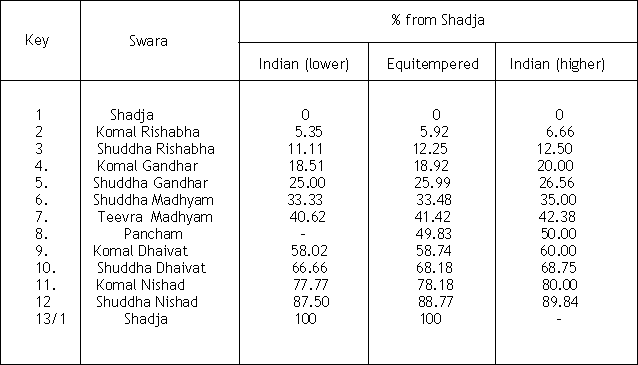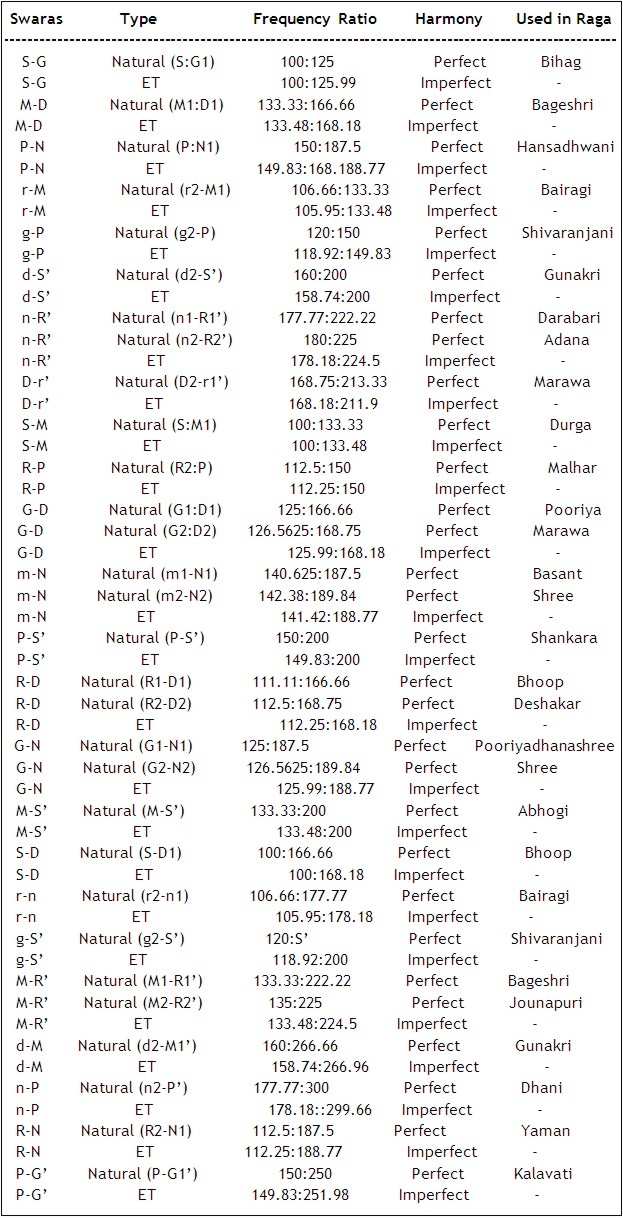To our astonishment, it will be seen that NONE of the notes in these 2 scales are identical. Hence, if we take Equitempered Harmonium for practice or accompaniment, our voice can only get set to wrong musical notes as shown below.
Table shows the difference between Equitempered notes and Indian musical notes.

All the tempered notes come "in-between" the lower and higher shrutis, and therefore completely abolish the subtle differences or microtones of the original 22 Indian Shrutis.
Hence, singing Classical Indian music simultaneously with a Tanpura and a Equitempered harmonium can be a trying task as the frequencies of swaras will completely mismatch. Many great Indian vocalists used to dislike the Equitempered Harmonium for accompaniment.
And the reason why the Equitempered Harmonium was banned by All India Radio is also amply clear from the above table. Such microtonal accuracy may not be of so much concern in Film music, Folk music, and other non-classical versions of music; and therefore Equitempered harmonium can perhaps be tolerable only with these types of music.
Indian Classical Music however requires extreme accuracy and harmony between different notes which is preserved in the Indian Classical 22 shruti scale, and that is abolished in the Equitempered scale (ET).
Table shows the abolition of harmony between Equitempered notes and perfect harmony between Indian Natural musical notes.

Therefore, Ragasangeet of Indian Classical Music can employ perfectly harmonius pairs of shrutis which is impossible with ET scale.

